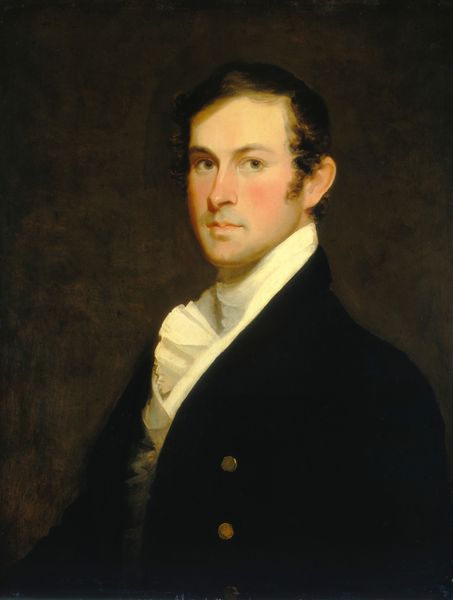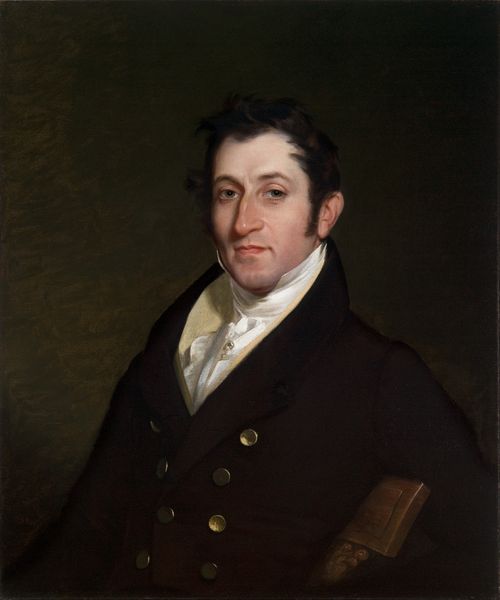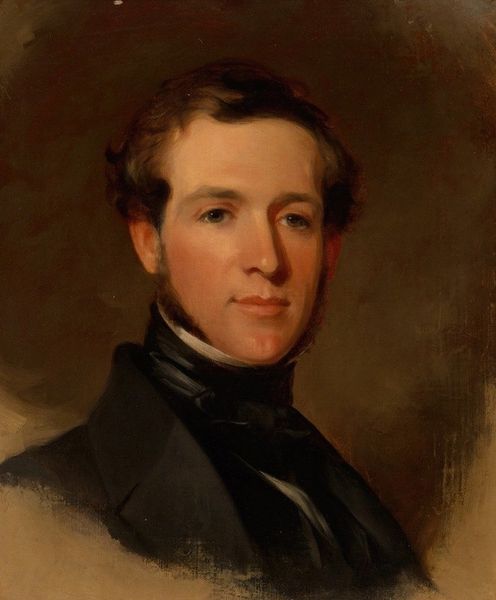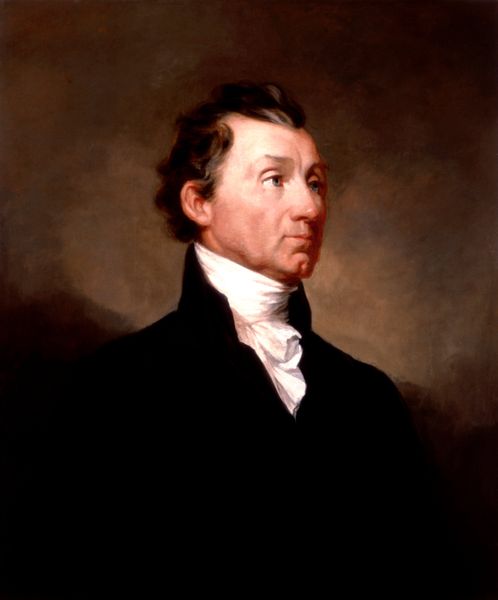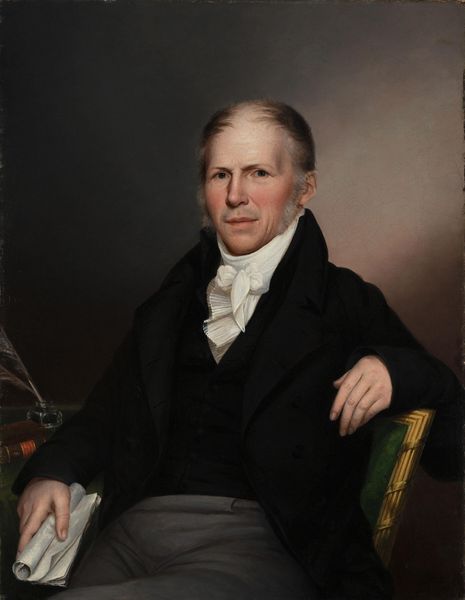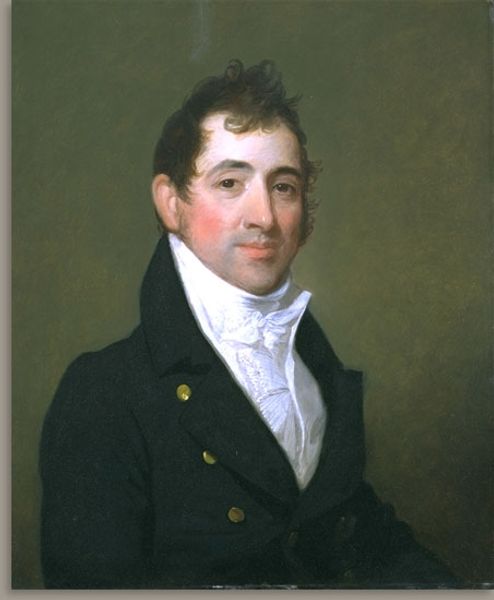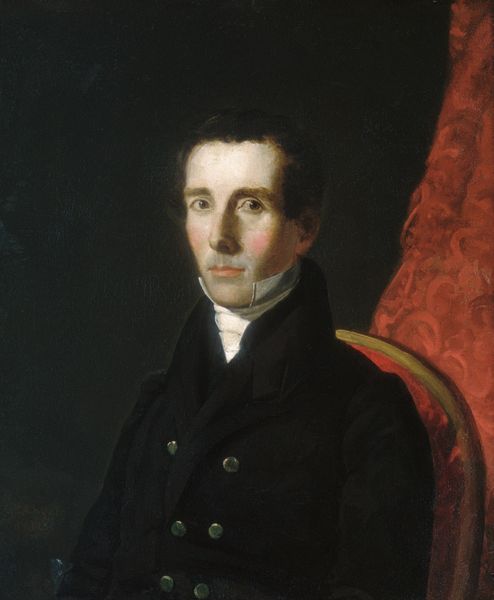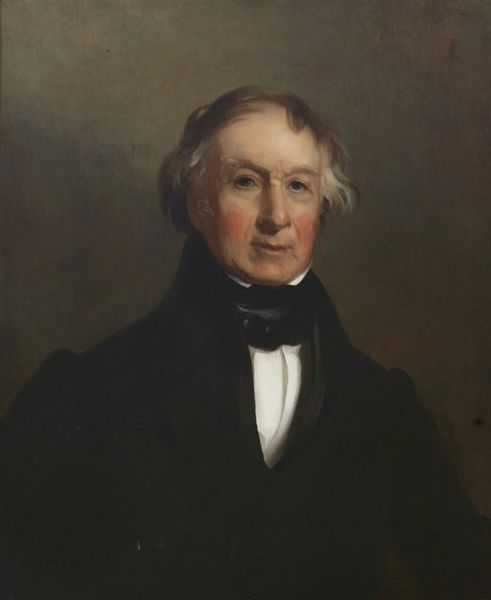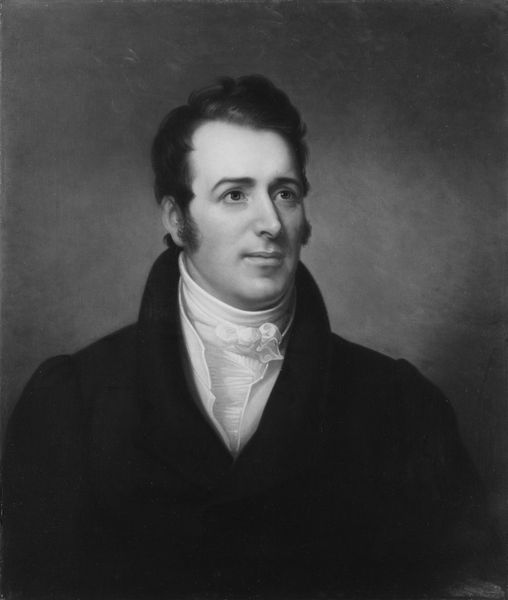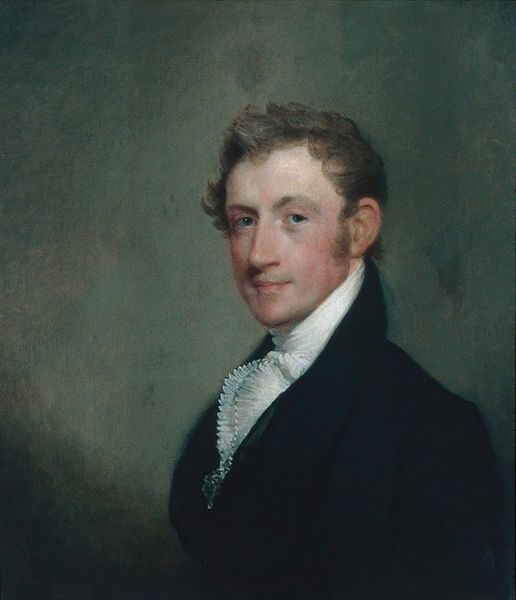
painting, oil-paint
#
portrait
#
portrait
#
painting
#
oil-paint
#
figuration
#
romanticism
#
academic-art
Dimensions: overall: 84 x 64 cm (33 1/16 x 25 3/16 in.) framed: 104.1 x 86.4 x 7.6 cm (41 x 34 x 3 in.)
Copyright: National Gallery of Art: CC0 1.0
Curator: Painted in 1828, here we have Samuel Lovett Waldo's portrait of Robert G. L. De Peyster. Editor: The colors are interesting, aren't they? A certain seriousness emanates from him. His clothes and severe countenance are somehow balanced by the stormy background. Curator: Indeed, Waldo employed oil paint in a manner that was becoming conventional for portraiture at this time. Notice the layering to create depth in his dark jacket, a striking contrast to the paler yellow vest beneath. And then the paper in his hand, details of which are finely rendered. It speaks of industry, or literacy perhaps, and how those items and accoutrements were associated to certain values in early American culture. Editor: Paper was still somewhat luxurious back then, an implicit sign of social rank. The slightly turned body and the turbulent background could reflect the state of affairs in the sitter's own world, perhaps. This era—with growing industries—signifies great transformation and, perhaps, social volatility for many Americans. Curator: I find it compelling that this canvas would've likely required collaborative effort within Waldo's studio, where he often delegated tasks to assistants like William Jewett. Understanding the divisions of labor in studios like these sheds light on the networks through which art was produced and distributed. Editor: The subject appears formal, stoic. Yet, even if that impression may be quite superficial, I see deeper anxieties of identity and belonging here; of a person positioning himself amid profound social shifts. And one also has to wonder, what are the exact circumstances that motivated such a meticulous and very bourgeois, formal undertaking? Curator: Thinking about it now, perhaps through Waldo's hand and brushstrokes, and considering also how portraiture circulated as a marker of social standing, we can appreciate not just the subject’s presence but also the complex network that sustained the making and meaning of his representation. Editor: This glimpse into the symbols of Robert G. L. De Peyster’s world really makes us consider the weight of these personal signifiers and how the symbols in his painting carry broader, deeper implications and lasting relevance even today.
Comments
No comments
Be the first to comment and join the conversation on the ultimate creative platform.
